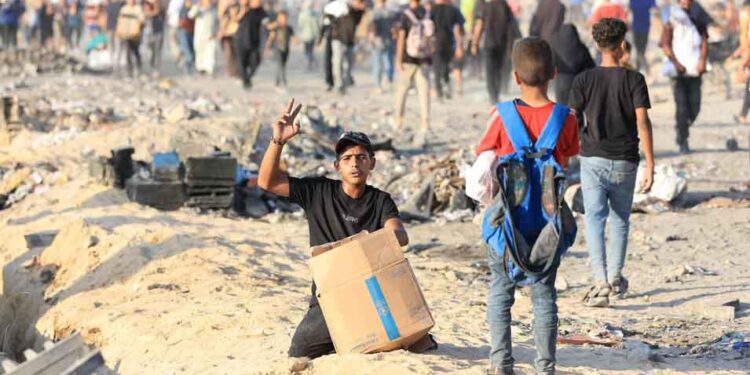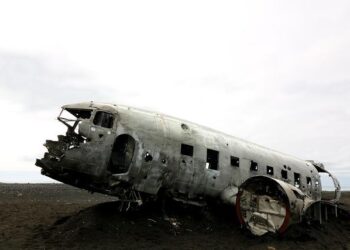Abdullah, a critically ill patient from Gaza, traveled to Turkiye seeking urgent medical treatment, but his journey ended in tragedy-the intervention arrived too late. His story highlights the desperate challenges faced by Palestinians in Gaza as they struggle with limited access to specialized healthcare amid ongoing conflict and blockade. This report examines the broader implications of restricted medical referrals and the toll it takes on vulnerable patients like Abdullah.
Abdullah’s Journey from Gaza to Turkiye Highlights Urgent Healthcare Crisis
Abdullah’s harrowing journey underscores the crippling state of Gaza’s healthcare infrastructure. Despite the desperate attempt to seek advanced medical intervention in Turkiye, the debilitating delays caused by restricted crossings and limited medical evacuation channels proved fatal. The healthcare system inside Gaza, strained by decades of blockade and recurrent conflicts, lacks essential resources, pushing patients like Abdullah to look abroad for critical treatment. However, the bureaucratic hurdles and travel restrictions mean that timely care is often out of reach, turning what should be a lifeline into a tragic ordeal.
The crisis goes beyond individual stories, revealing systemic barriers impacting thousands in Gaza. Key factors contributing to these healthcare failures include:
- Shortage of medical supplies and equipment due to import restrictions
- Insufficient specialized medical personnel in local hospitals
- Delays and refusals in exit permits for patients needing treatment abroad
- Overwhelmed local facilities struggling amidst ongoing conflict aftermath
| Key Challenge | Impact on Patients |
|---|---|
| Permit Delays | Missed critical treatment windows |
| Equipment Shortage | Inability to perform advanced procedures |
| Staff Shortages | Overburdened healthcare workers, longer wait times |
| Blockaded Imports | Lack of medications and surgical supplies |
Delayed Medical Evacuation Underscores Systemic Barriers for Gaza Patients
The tragic case of Abdullah highlights the critical delays faced by Gaza patients requiring urgent medical care abroad. Despite his urgent need for specialized treatment available in Turkiye, bureaucratic hurdles and restricted crossings caused significant postponements, ultimately diminishing his chances of recovery. Local health authorities and families alike remain frustrated with the labyrinthine permit procedures enforced by multiple authorities, which often prolong wait times beyond what critical patients can endure.
Several systemic issues contribute to these dangerous delays, including:
- Limited operation hours at border crossings restricting patient movement.
- Complex application processes for medical permits that require multiple approvals.
- Insufficient coordination between health ministries, international agencies, and border officials.
The following table summarizes key obstacles encountered by Gaza patients in recent months:
| Barrier | Impact | Frequency |
|---|---|---|
| Permit Delays | Weeks-long waiting period | High |
| Border Closures | Sudden travel cancellations | Moderate |
| Limited Ambulance Services | Inadequate emergency transport options | High |
Recommendations for Improving Access to Timely Treatment in Conflict Zones
Enhancing medical infrastructure and establishing safe corridors remain critical steps to ensure that patients in conflict zones can access urgent care before their conditions worsen. Investment in mobile clinics and telemedicine can provide immediate support, especially in heavily besieged areas where traditional healthcare delivery is disrupted. International agencies and local governments must collaborate to secure humanitarian exemptions that facilitate quick and safe passage for critical patients seeking treatment abroad or in safer territories.
Furthermore, integrating community-based health networks built on trust and local knowledge can greatly improve early identification and referral of serious cases. These networks should be supported with training programs to help health workers recognize urgent conditions and navigate complex evacuation procedures. The table below outlines key actionable strategies to bridge the gap between conflict-affected patients and timely medical care:
| Strategy | Description | Impact |
|---|---|---|
| Safe medical corridors | Negotiated routes for patient evacuation | Reduces delays significantly |
| Mobile clinics | Direct healthcare delivery in conflict zones | Provides immediate treatment access |
| Telemedicine platforms | Remote diagnosis and consultation | Bridges specialist gaps |
| Community health training | Empowers local responders | Improves early intervention |
| International partnership | Collaboration for resources and advocacy | Enhances system resilience |
In Retrospect
Abdullah’s story underscores the urgent challenges faced by Gaza’s residents in accessing timely medical care amid ongoing conflict and blockade. As families continue to seek treatment beyond Gaza’s borders, delays and restrictions pose life-threatening risks, highlighting a critical humanitarian issue that demands immediate international attention.
















